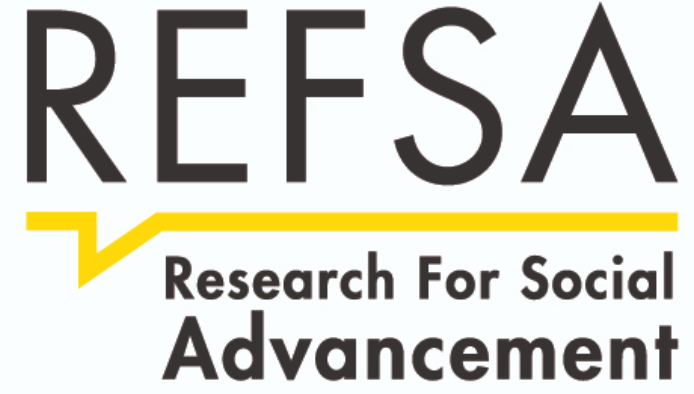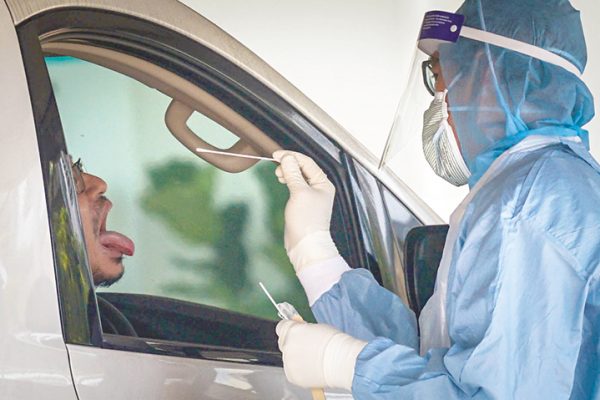Read #ProjekMuhibah Strategy 1 Report here
As part of the Research for Social Advancement’s (Refsa) Projek Muhibah, 10 policies were introduced to address the socio-economic challenges caused by the pandemic.
Projek Muhibah authors Dr Ong Kian Ming and Frederik Paulus outlined the comprehensive policy approach called Find, Test and Trace, Isolate, Support and Vaccinate (FTTIS+V).
“FTTIS+V is a framework for pandemic management that is in line with the recommendations of public health experts and policymakers worldwide.
“The framework is summarised as using statistical models to identify potential new infection clusters and taking remediation steps to contain the spread, followed by ramping up testing in transparent manner especially in potential hotspots and requiring carries of the virus to quarantine,” Refsa said in a statement yesterday.
It added that providing medical and economic support as well as follow-ups for positive patients should be ensured and increasing vaccination rates as well as targeting red zones and groups with largest share of Covid-19 outbreaks, such as workplace clusters.
“All five links in the framework need to be strong for a successful pandemic response.
“As it stands, even the ‘find’ component in Malaysia is inadequate, which renders all other strategies ineffective, thereby forcing the country to go into a difficult full lockdown,” it said.
Refsa also recommended some policy actions for certain components of the FTTIS+V, namely linking MySejahtera check-ins to positive cases and revisiting the Hotspot Identification Dynamic Engagement (HIDE) model.
“High-risk groups should be tested, and implement targeted restrictions and reduce hotspot density,” it said.
For test and trade, large-scale preventive testing should be introduced, as well as ensuring transparency on testing data, while providing self-testing kits and hiring additional traces.
“For isolate, employ contact tracers to ensure those who quarantine at home respect the rules,
“Reduce prison overcrowding to minimise density through extraordinary measures. This can be done by early release of minor offenders and avoid rounding up undocumented migrants in cramped detention centres at this time,” it said.
In addition, support can be provided by ensuring positive patients receive regular follow-up on conditions as well as economic and logistical support, where the breadwinner has to isolate.
“On vaccination, address vaccine hesitancy and improve access to vaccine registration, including among those with low digital literacy and the migrant community.
“Prioritise vaccinations for Klang Valley factory as well as construction workers, who account for a high share of positive cases,” it said.
Currently, the country is relying on intensifying its vaccination campaign to deal with the pandemic.
The rates have accelerated in recent weeks, in which the daily doses distributed exceeded 200,000 doses for the first time on June 15, which is only a small fraction of the full canvas.
Refsa said that even as the number of vaccinations go up, the need for a systematic and comprehensive FTTIS+V framework remains, especially if we want to open up the economy safely and successfully.
“It is only through a rigorous strategy like this that the lockdown relaxation plan could become a reality,” it said.
On Tuesday, Prime Minister Muhyiddin Mohd Yassin announced a four-phase lockdown plan titled the National Recovery Plan (NRP)to achieve herd immunity by the end of the year.
The Malaysian Reserve previously reported that the Malaysian Medical Association (MMA) commented that the NRP lacks a clear strategy to flatten the curve.
MMA president Dr Subramaniuam Muniandy said that Malaysians will need to be more assured of a full and sustainable recovery so that remaining sectors can remain open without the threat of another movement restriction.
Among the criticisms included the lack of mention on targeted positivity rate, while there are targets to reduce daily cases to below 4,000; 2,000 and 500, which bears little significance if the positivity rate is high or above 5%.
– Published in The Malaysian Reserve on 19 June 2021.

